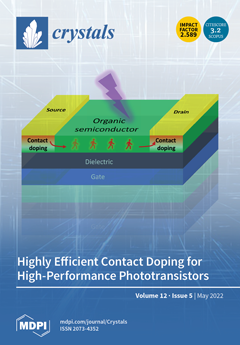Alumina (Al
2O
3) composite ceramics with different composition ratio and particle-size distribution were fabricated by the material extrusion and photo-polymerization combined process (MEX-PPM) based on additive-manufacturing (AM) technology in our previous work. These particles were nanosized Al
2O
3 (n-Al
2O
3), micron-sized TiCN (μ-TiCN) and Al
2O
3. Effects of n-Al
2O
3 and μ-TiCN on Al
2O
3 composite ceramics were investigated by characterizing the volume density, EDS spectrum, mechanical properties and microstructure of the prepared samples. It was found that n-Al
2O
3 had a significant effect on the hardness of Al
2O
3 composite ceramics, μ-TiCN, with excellent performance in density, flexural strength and fracture toughness. The Al
2O
3 composite ceramics with optimum contents of 10 wt % n-Al
2O
3 and 30 wt % μ-TiCN showed good microstructure and mechanical properties. Their porosity and volume density were at 4.073% and 4.177 g/cm
3, respectively. Their hardness, flexural strength and fracture toughness were at 16.592 GPa, 592.875 MPa and 6.308 MPa/mm
2. The flexural strength of the ceramics was significantly higher than that of Al
2O
3 ceramics prepared by SLA in document (178.84 ± 17.66 MPa), which had great potential in high-pressure strength structure.
Full article





